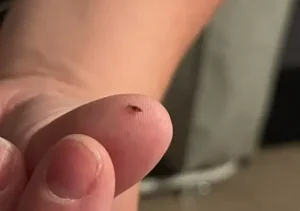
How to Protect Children and Adults from Head Lice
Head lice are a common issue that can affect both children and adults, causing discomfort and frustration. While they don’t carry diseases, these tiny parasites can spread quickly, especially in places where close contact is common. Fortunately, there are steps you can take to protect yourself and your family from head lice. Here are some practical ways to prevent an infestation.
1. Avoid Head-to-Head Contact
Head lice are most often spread through direct head-to-head contact. Children, especially in schools or during playdates, are more likely to come into close contact with others. Encourage your kids to avoid this type of contact whenever possible, particularly during activities where heads might touch, like group play or sports.
2. Don’t Share Personal Items
Sharing personal items such as combs, brushes, hats, and hair accessories can lead to lice spreading. Make sure everyone in the household has their own grooming tools and remind children not to share these items with friends or classmates.
3. Be Cautious with Bedding and Clothing
Lice can sometimes spread through shared bedding, towels, or clothing, though this is less common. Regularly washing bed linens, towels, and clothing in hot water can help reduce the risk. If you suspect an outbreak, dry these items on high heat, as lice and their eggs (nits) cannot survive high temperatures.
4. Use Preventative Products
There are lice-repellent sprays and shampoos available that contain natural ingredients, such as tea tree oil, lavender, or eucalyptus, known to deter lice. Consider using these products, especially during lice outbreaks in your community or school.
5. Regular Hair Checks
Regularly check your child’s hair for lice, especially behind the ears and at the nape of the neck, where lice tend to gather. Early detection is key to preventing a full-blown infestation. If you notice lice or nits, take immediate action to treat the problem before it spreads.
6. Educate Your Children
Educating your children about head lice and how they spread can be an effective prevention tool. Let them know why it’s important not to share personal items or get too close to others when playing. The more they understand, the better they can protect themselves.
Conclusion
By following these simple steps, you can significantly reduce the chances of head lice affecting your household. Prevention is always easier than treatment, so staying vigilant and taking precautions will help keep everyone—both children and adults—lice-free.





